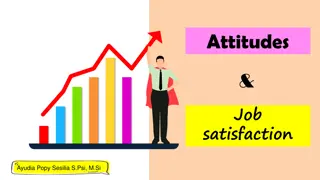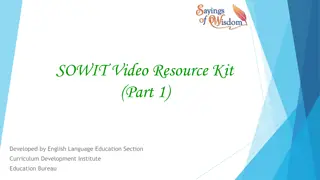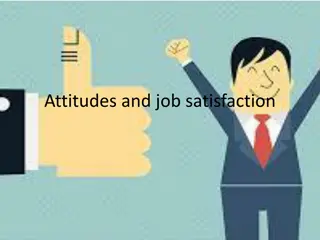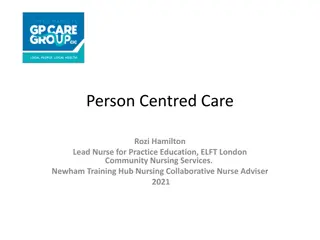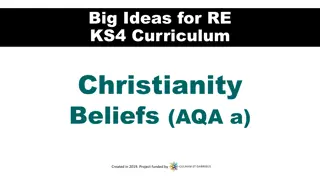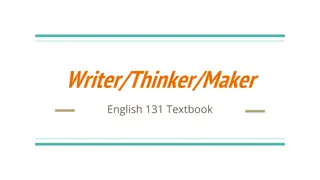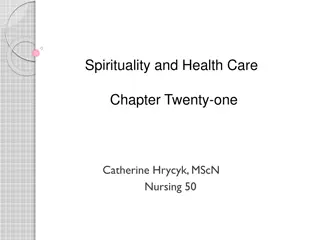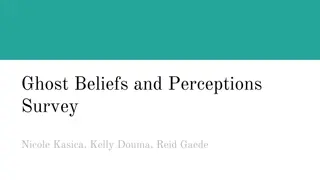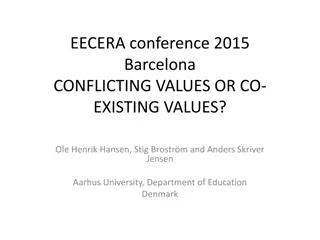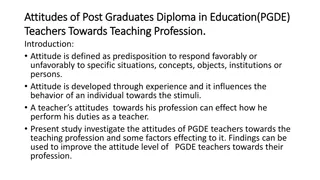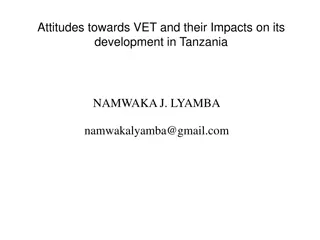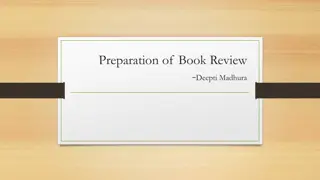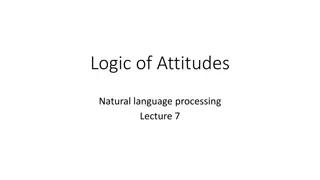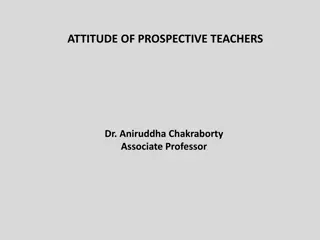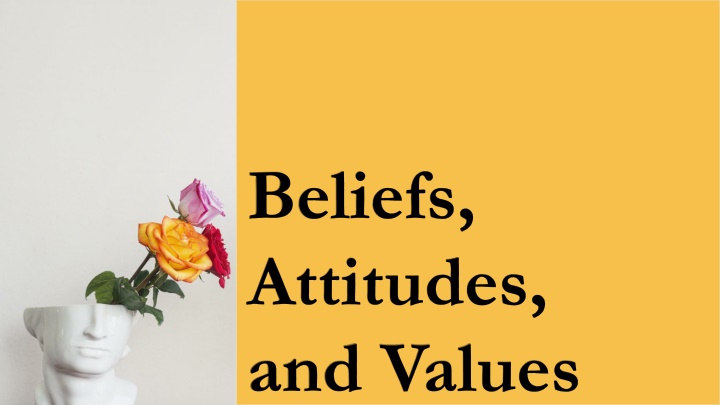
Beliefs, Attitudes, and Values: Exploring Human Cognition and Behavior
Explore the intricate concepts of beliefs, attitudes, and values, uncovering their impact on human behavior. Delve into the functions of attitudes, the development process, and the various types of beliefs influencing our perception of the world.
Download Presentation

Please find below an Image/Link to download the presentation.
The content on the website is provided AS IS for your information and personal use only. It may not be sold, licensed, or shared on other websites without obtaining consent from the author. If you encounter any issues during the download, it is possible that the publisher has removed the file from their server.
You are allowed to download the files provided on this website for personal or commercial use, subject to the condition that they are used lawfully. All files are the property of their respective owners.
The content on the website is provided AS IS for your information and personal use only. It may not be sold, licensed, or shared on other websites without obtaining consent from the author.
E N D
Presentation Transcript
Beliefs, Attitudes, and Values
What are beliefs and attitudes? What are the functions of attitudes? Are there unconscious attitudes? How are attitudes related to behavior?
BeliefsGeneralizations about events and topics I believe in climate change. I believe the world is fair. I believe we have free will. Can you think of others?
I think small colleges are better than large colleges. I think that religion is an important part of the human experience. I think equal rights are necessary to a society. Can you think of others? Beliefs with an evaluation. Attitudes
Why do people develop attitudes? Utilitarian Knowledge Ego-Defense Value-Expressive Express aspects of the self. What to do, what not to do. Making sense of events and issues. Protection from unwanted truths.
Utilitarian Function - Helps us decide what to do and what not to do - Fast food is good Fast food is unhealthy Vaping looks cool Vaping looks lame College is worthwhile College is a waste of time I like the mountains I like the beach
Knowledge Function - Helps us make sense of events and issues - Political Orientation Candidate Speech Belief in the Media News Article Belief in Climate Change Research Finding
Ego-Defense Function - Helps us from threatening information - Someone is kicked off the football team They start saying football is stupid. They start believing that company is a bad place to work. Someone doesn t get hired at a company Someone who is insecure about their sexual orientation They start displaying homophobic attitudes.
Value-Expressive Function - Helps us express important values and aspects of oneself- Favoring or opposing affirmative action Valuing social justice versus personal responsibility Being extraverted versus introverted Liking parties versus not liking parties Nationalism versus International Identity Supporting or opposing tough immigration laws
Beliefs Attitudes
Thoughts Feelings Actions
Dimensions of Attitudes Evaluation Activation Strength
- Our minds strive for coherence and consistency - An unpleasant state of cognitive arousal due to inconsistency in beliefs, attitudes, and values. What happens when coherence is not achieved? Two mental states with conflicting implications for action. Cognitive Dissonance
For a video overview of Cognitive Dissonance CLICK HERE
How do we reduce dissonance? Change the attitude to be consistent with the behavior. Change one of the conflicting mental states. Change behavior to be consistent with the attitude.
Amplification Initiation Motivation Reduction Dissonance begins with It increases when It is experienced as And is reduced by The decision as freely chosen. An action or decision that conflicts with an important aspect of the self. There are no strong threats or rewards. Change designed to reduce the unpleasant arousal. Unpleasant arousal. It produces unforeseeable negative consequences The decision cannot be withdrawn.
Common Paradigms in Research on Cognitive Dissonance Counter Attitudinal Action Participant engages in an action inconsistent with their attitude or concept. Variables Strong versus weak incentive: External inducement to perform the action. Choice vs no choice: Perceived choice Strong versus weak impact: Perceived consequences Dependent Variables Action-relevant attitudes Self-concept change Internal states (guild, anxiety, etc.)
Festinger & Carlsmith (1959) Manipulation: Students performed a boring task (turning pegs in holes). Tell another student that the task was fun and interesting (inconsistent*) Some students paid $1 Some students paid $20 Assess attitudes about peg-turning task. How enjoyable was the task? How much did you learn? How much scientific importance did it have? How likely are you to participate in a similar experiment? On a scale of -5 to +5
Post-Decisional Dissonance Conflictthat one feels between knowing that you made a decision and the possibility that the decision may be wrong. Examples: Increased confidence in winning at gambling after making a bet Spread of alternatives after a big purchase Idealization of a person after a marriage proposal Derogating a person you have hurt or rejected
Dissonance is experienced as aversive arousal. No arousal = No dissonance = No need to change Cooper, Zana, & Taves What about arousal? * Participants who were given a tranquilizer (eliminating physiological arousal) did not change their opinions, even after writing a counter- additudinal essay.
Misattribution of Arousal Cognitive dissonance occurs because of unpleasant arousal But what if people think their arousal is due to another source? Zana & Cooper, 1974 Researchers gave participants a placebo drug (induced no physiological effect) But they told participants different stories: a) The truth (the drug has no effect) b) Falsehood 1 (the drug will make you tense) c) Falsehood 2 (the drug will make you relaxed) Choice versus no choice in taking the drug
For a video overview of the Bridge Study (Zanna & Cooper, 1974) CLICK HERE
Results 16 14 Amount of Attitude Change 12 10 8 No Choice Free Choice 6 4 2 0 Tense No Effect Relaxed Purported Effect of the Drug

